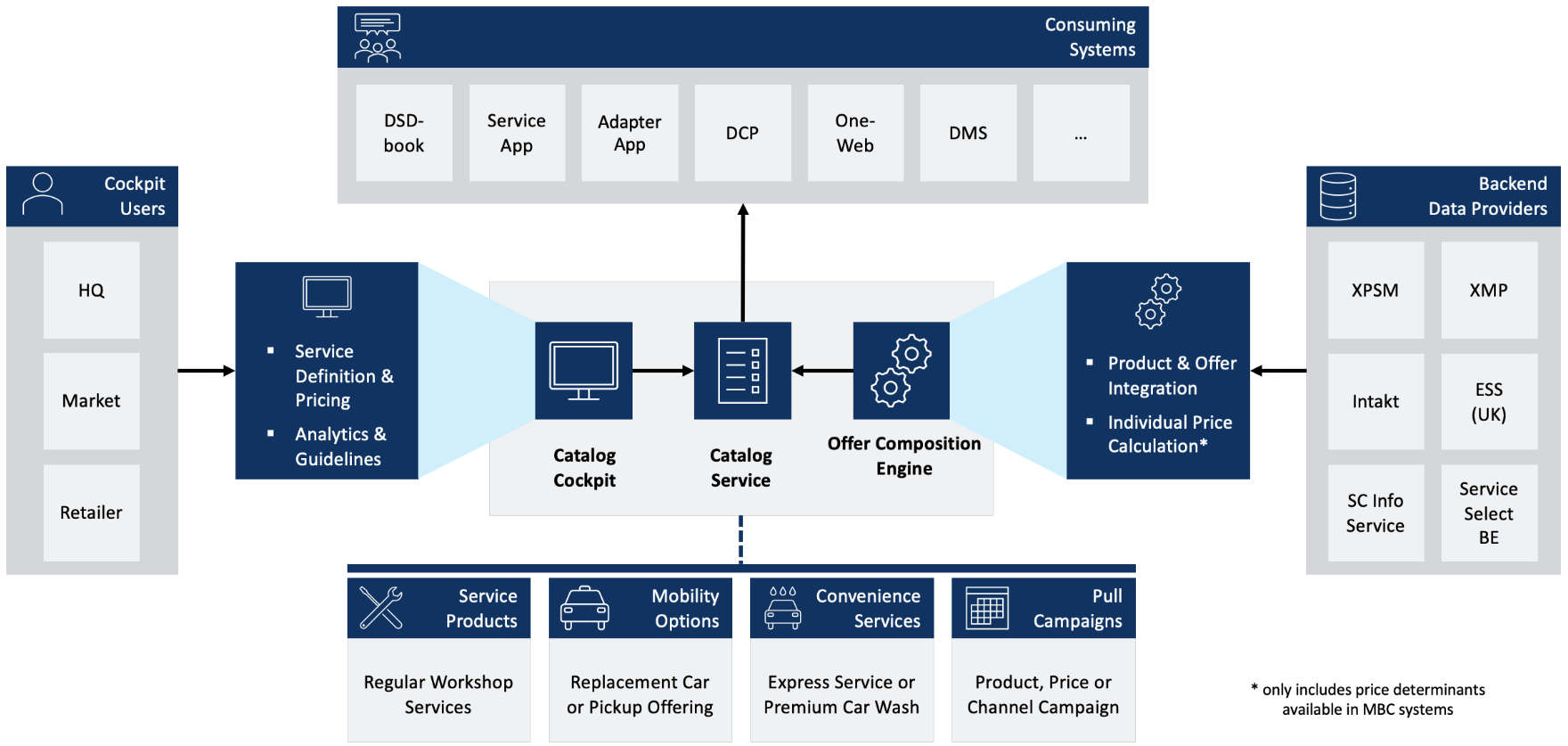Mercedes Benz Product Catalog
Project
The product catalog platform has been tailor-made for Mercedes dealerships worldwide, enabling dealerships in various countries to customize their service offerings for end customers. Moreover, the corresponding application designed for end customers allows them to conveniently request service for their vehicles.
The project is part of a more extensive set of related apps working together in the Mercedes-Benz environment.
My role
Senior Product Designer/ Team lead
Responsible for all the processes of design, from problem space definition to design implementation
Creating the ecosystem mapping for the product
Conducting user interviews with different user target groups
Lean UX (Think, Design, Measure)
Objective
The main goal was to understand the actual pain points of the Mercedes dealership ecosystem
and provide a universal solution for all dealership partners to set up and maintain their service products
Research method
Customer interviews
Participatory design
Clickstream testing
Surveys
Remote moderated testing
Experience mapping
KPI performance
Detailed case study will be shown
Challenge
The primary challenge was to create a unified solution that catered to the needs of diverse dealership partners across various countries. This required a deep understanding of local market differences, dealer pain points, and operational complexities. The product needed to be adaptable while maintaining consistency across the brand’s global footprint.
Before diving into design, I led a series of user interviews and experience mapping sessions with key stakeholders, including:
-Dealership employees from various markets
-Internal teams managing service product integration
-End customers using the service platform
Through participatory design, I uncovered significant pain points in how dealerships managed their service catalogs:
–Complexity: The existing system was overly complex, requiring manual updates for each service product. The task flows are relatively long and confusing.
– inconsistency: Dealerships across different regions struggled with inconsistent pricing, and the lack of standardized workflows led to inefficiencies.
– Data accuracy: Dealers faced challenges in accurately maintaining service information, which affected customer experiences.
Designing for Flexibility and Usability
We adopted a Lean UX approach (Think, Design, Measure) throughout the project:
Think: We mapped out the ecosystem based on the user interviews understanding dealership workflows and internal processes. The goal was to capture all touchpoints and dependencies, making designing solutions that fit seamlessly into the Mercedes-Benz system easier.
Design: I created multiple prototypes and wireframes, testing them through remote moderated usability testing with a mix of dealership staff and customers. This iterative process allowed us to refine the UI and improve usability across regions.
Measure: The final design was tested using a combination of clickstream testing and questionnaires, ensuring that we gathered real-time data on how dealerships were interacting with the platform.
Brainstorming Session
Defining Success Metrics
For a B2B platform of this scale, the success metrics had to be carefully selected to ensure the product’s long-term viability.
Time on task: This tracks how long users can complete specific actions on the platform, such as configuring service offerings or updating product details.
Why it matters: This metric is particularly important in a B2B platform where dealership staff need to perform these tasks efficiently without being bogged down by a complex interface. Measuring time on task allowed us to identify areas of friction in the user journey, helping us iterate on the design to ensure that key tasks could be completed quickly and effortlessly.
Data Accuracy: One of the primary pain points we addressed was the accuracy of service offerings and pricing data. We tracked how often dealerships updated their catalogs without errors and measured the time to complete them.
Why it matters: For a dealership, incorrect pricing or service details can lead to lost customers and brand trust issues.
Error Frequency: We focused on minimizing errors in the platform, particularly during dealership data input and configuration.
Why it matters: Fewer errors meant higher user confidence in the system and less time spent troubleshooting.
Product Listing Page
Product Detail Page
Product Multiple Pricing
DMS Manual Matching
Integrating legacy DMS (Dealer Management System) services with the new Mercedes-Benz Product Catalog posed a significant design challenge. Each dealership’s customized service configurations from the DMS system had to be manually matched with the standardized services in the new Product Catalog. Given the variety of services and the complexity of legacy data structures, this manual matching process could easily become overwhelming, leading to inefficiencies and potential errors. As lead UX designer, I aimed to simplify this process, creating a seamless and intuitive workflow for dealership users.
To tackle this, we introduced a side-by-side layout design. The Product Catalog options appeared on the left, and the corresponding legacy DMS services were displayed on the right, allowing users to compare and match services directly. Users could link a legacy service to its corresponding new service with a single click, and we introduced a clear “Matched” tag to indicate completed matches visually. This design eliminated the need for complex navigation, significantly reducing cognitive load. We validated and refined this approach through usability testing, successfully minimizing the number of clicks and streamlining the overall matching process. As a result, users were able to complete their tasks faster, with greater accuracy and confidence.
Detailed case study will be shown







